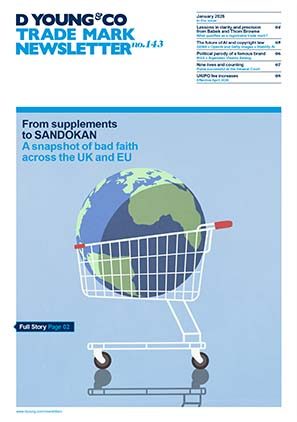New rules for proof of use in Germany – what brand owners need to know
In a decision issued on 14 January 2021 (Case No I ZR 40/20), the Supreme Court addressed the following two questions relating to proof of use: 1) What is the relevant five-year period to show genuine use? 2) Who has the burden of proof? The short answer to the first question is that the relevant five-year period must be calculated from the date of filing of the revocation action. To the second, the simple answer is the owner of the German trademark.
What is the relevant period to show genuine use?
Much like an EU trademark, a German trademark is subject to a use requirement and genuine use must be shown for a continuous period of five years. In Germany, a mark is registered before it can be opposed. With regard to the period of relevant use, the Supreme Court previously held that there was a ‘moving use’ period. This meant that in cancellation proceedings based on non-use, the five-year period was calculated from the time of the last oral hearing, rather than the time that the revocation action was filed. As such, rights holders had to continuously submit new use evidence, in particular if proceedings were pending for a long period. In extreme cases this meant that all use evidence filed could become outdated and irrelevant during the course of the proceedings.
The Supreme Court has now confirmed that the relevant five-year period is to be calculated from the time the action is filed (either at the German Patent and Trademark Office (DPMA) or at a German court).
While this change is welcome, given its clarity and consistency with EU law, it has one disadvantage – the old relevant period allowed third parties to bring a non-use counterclaim when they knew that the non-use grace period was close to ending, but anticipated that the oral hearing would be after that date, even in the appeal instance. This strategic option may no longer be available.
Who has the burden of proof?
As regards the burden of proof, the Supreme Court previously held that the revocation applicant had the burden of proof to show non-use. Unsurprisingly, showing a negative fact can be tricky. Nonetheless, the Supreme Court had afforded a secondary onus of proof on the trademark owner, but only after the applicant had given enough indication for non-use. This differed in relation to proof-of-use requests in response to an infringement action or opposition, where the trademark owner had the burden of proof.
Now, the Supreme Court has finally aligned with EU trademark law and the Court of Justice of the European Union (see CENTROTHERM II, 26 September 2013) by confirming that the burden of proof is on the trademark owner. In its decision, the Supreme Court finally agreed that the rights holder is best placed to show genuine use of its own mark. While this may be less advantageous to owners of German marks, it strengthens the position of third parties, in particular those that may have to defend themselves against an infringement claim.
This article was first published on World Trademark Review on 22 May 2021: www.worldtrademarkreview.com.

